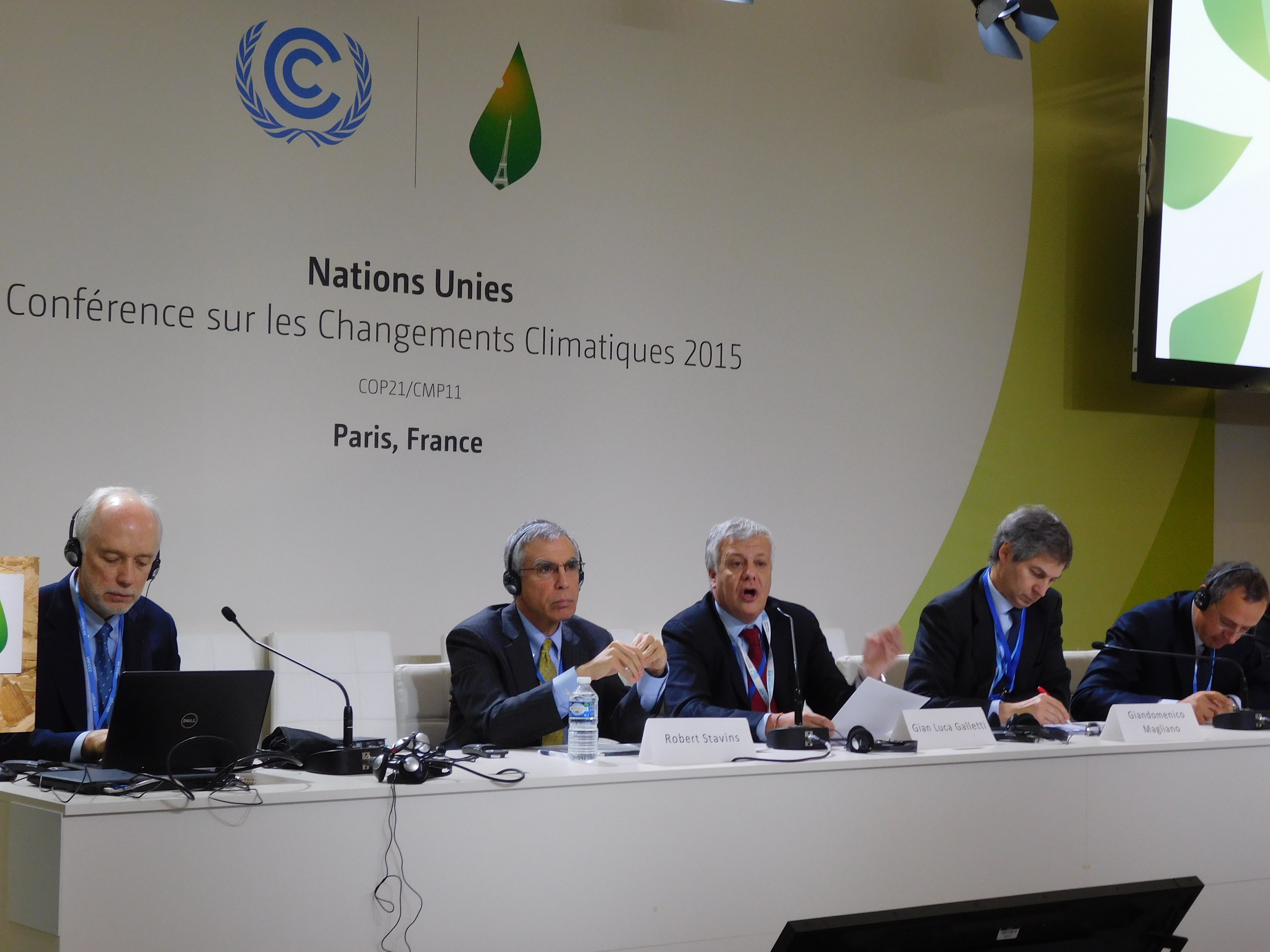A side-event convened by Harvard University and the Fondazione Centro Studi Enel on December 9 addressed the need for comparing the national mitigation efforts that Parties to the UNFCCC have proposed in the “Intended Nationally Determined Contributions” (INDCs) that they have submitted to the UNFCCC. The INDCs are the foundation on which the agreement that is emerging at COP21 in Paris is being constructed. The INDCs are statements made by individual nations of the actions they intend to take to address climate change, each of which addresses mitigation of greenhouse gas emissions, and many of which also address adaptation to climate change and other actions. This bottom—up approach is highly flexible, enabling each country to decide for itself its own targets and actions, based on its own assessment of its capabilities and circumstances. While the approach has important advantages that have facilitated broad participation of both developed and developing countries in mitigation efforts, it also poses some challenges. One widely acknowledged challenge is that the INDCs, when added up, will fail to reduce GHG emissions to a level that would limit global warming to less than 2 degrees C. A second is that the diversity in types of targets and actions that nations have proposed for themselves makes it difficult to compare efforts across nations.
Speakers at the event noted a number of reasons why comparison of efforts embodied by the INDCs is needed. First is to be able to estimate their aggregate effects on future emissions of GHGs and future climate. Second is to enable countries to ascertain whether other countries are following through on their commitments and doing their fair share. Third, it allows the public, civil society groups and businesses to understand the efforts being made by different countries and to use this information to advocate for greater ambition and/or adjustments to address issues of cost-effectiveness and competition. Finally, and this was key for the members of the panel, is that the information needed for comparisons can facilitate linking efforts for cooperation across international borders in ways that can reduce costs and support more ambitious emission reductions.
Many of the points discussed at the event are made in a paper by Joseph Aldy, which you can access here.



Comments